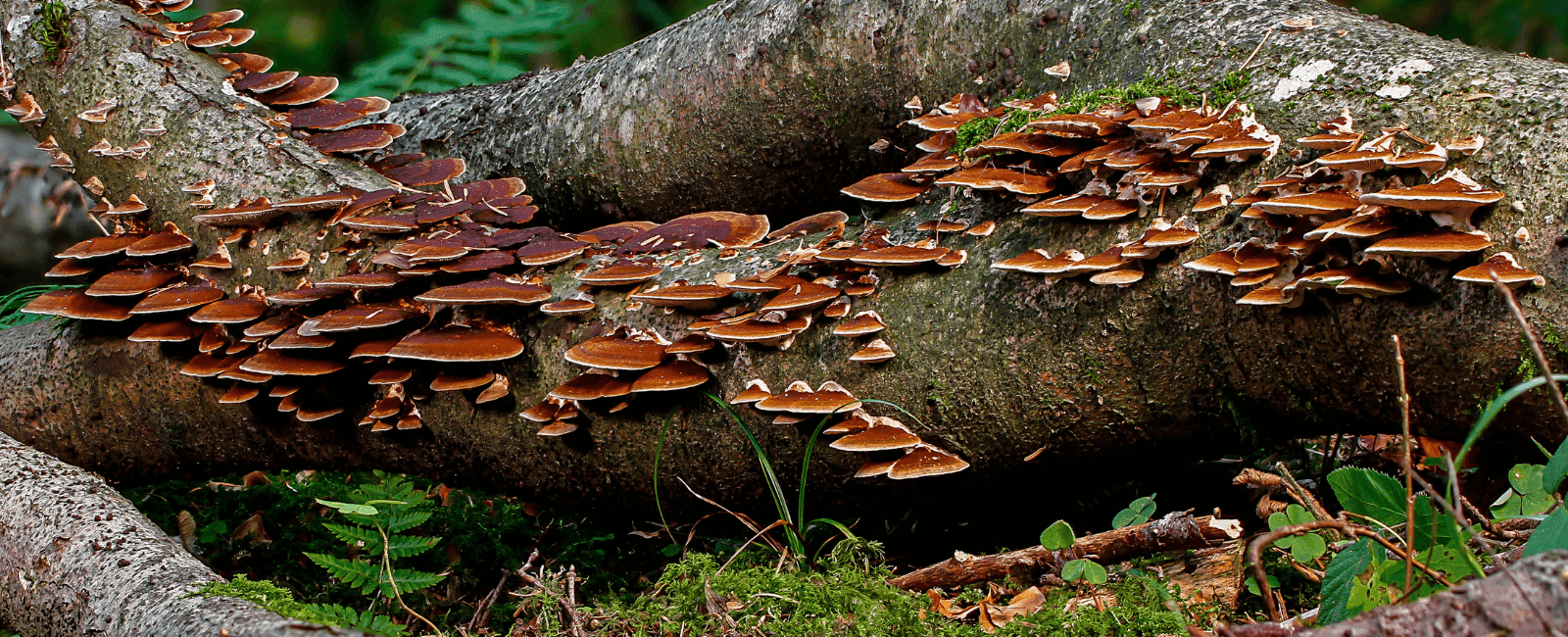

Mushrooms are commonly misunderstood organisms. While some think they’re plants, they’re part of the fungi family because they break down organic matter (dead plants and animals) for food. Because of this, fungi are a vital part of every ecosystem, as they help to recycle organic materials and “clean up” after other organisms in the food chain.
What do mushrooms eat?

Unlike animals, fungi can’t process food through their stomachs. They also don’t create their own food through photosynthesis as plants do with chlorophyll. Instead, fungi are heterotrophic decomposers. They break down dead organic matter, called substrate, to get nutrients. They use digestive enzymes outside their cell walls to access nutrients from dead animals and other non-living organic matter.
The chain between plants, which create their food, animals, which consume plants and other animals for food, and mushrooms, which absorb nutrients from decaying plants and animals, create a balanced system where nutrients are recycled to be used again and again.
How do types of mushrooms eat?

Mushrooms have two main parts to their anatomy: mycelium and fruiting bodies. Mycelium is the structure that fungi use to “eat” and is made of branching rootlike structures.
Mycelium technically can grow indefinitely, spreading out into vast networks through its lifecycle. They grow below ground around decaying matter and branch into sections called hyphae, which secrete enzymes that help to break the matter down into nutrients and sugars, like cellulose. Once broken down, the fungi can absorb the nutrients they need to grow.
Fruiting bodies are the reproductive parts of mushrooms and are what you typically picture when you think of a mushroom. These grow above ground and release spores, the mushroom’s “seeds,” which then develop into new mushrooms. Mushrooms require a lot of moisture to grow their fruiting bodies, which is why you commonly find wild mushrooms sprouting after rainfall or in damp places.
The categories of mushrooms

There are four main categories of mushrooms and fungi: Saprotrophs, Mycorrhizae, Parasites, and Endophytes.
Saprotrophs
Saprotrophs, also known as saprophytes, grow directly on decaying plant matter, especially wood and tree bark. Many edible mushrooms are saprotrophs, including oyster mushrooms, cremini, morels, shiitake, and portobello.
Mycorrhizae
Mycorrhizaemushrooms attach themselves to living plants, often plants’ roots, to grow. Unlike parasitic fungi, however, they often benefit the plants they stick to. Mycorrhizal fungi have been found to help trees communicate with each other by passing along essential nutrients and hormones to other nearby trees through their web of mycelia.
The total length of this network of fungi and trees is astoundingly more than 450 quadrillion kilometers! Some popular mycorrhizal mushrooms are chanterelles and truffles.
Parasites
Parasitic mushrooms grow on living organisms, often killing the plants and insects they use as hosts. The Medicinal mushrooms, Chaga and Lion’s Mane, are some commonly known parasitic mushrooms. Another type that infects insects, like ants, is cordyceps. These fungi seem to be straight out of a scary movie, as they “brainwash” the insects into attaching themselves to tall trees so that the mushroom spores can spread further.
Endophytes
Endophytesalso attach to living organisms, but unlike parasites, these mushrooms have a symbiotic relationship with their host, meaning both the mushroom and host gain from the relationship. The mushrooms sometimes help their host get vital nutrients or fight off diseases with this type of fungi.
Nature’s recyclers

Beyond just being a delicious food for humans, the way that mushrooms get their food plays a vital role in every ecosystem. By decomposing decaying matter, these organisms act as the clean-up crew for our food chain and help recycle essential nutrients and materials that other organisms can use.
They also create a vastly important communication network through their mycelium, which breaks down organic matter and helps communicate and transfer nutrients to other organisms in the web. Whether you grow mushrooms or want to increase your intake of this food source, they do as much good for our bodies as they do the planet.


